Delicious, slightly tart with a brilliant red color, homemade crabapple jelly is a fall tradition every forager should know. Crab apple jelly recipes are one of the easiest jelly to make as they're all natural-no pectin needed. Today I'll tell you everything you need to know about making a simple crab apple jelly at home. I'll also walk you through my favorite variation: crab apple hot pepper jelly or crabanero, made with habaneros.
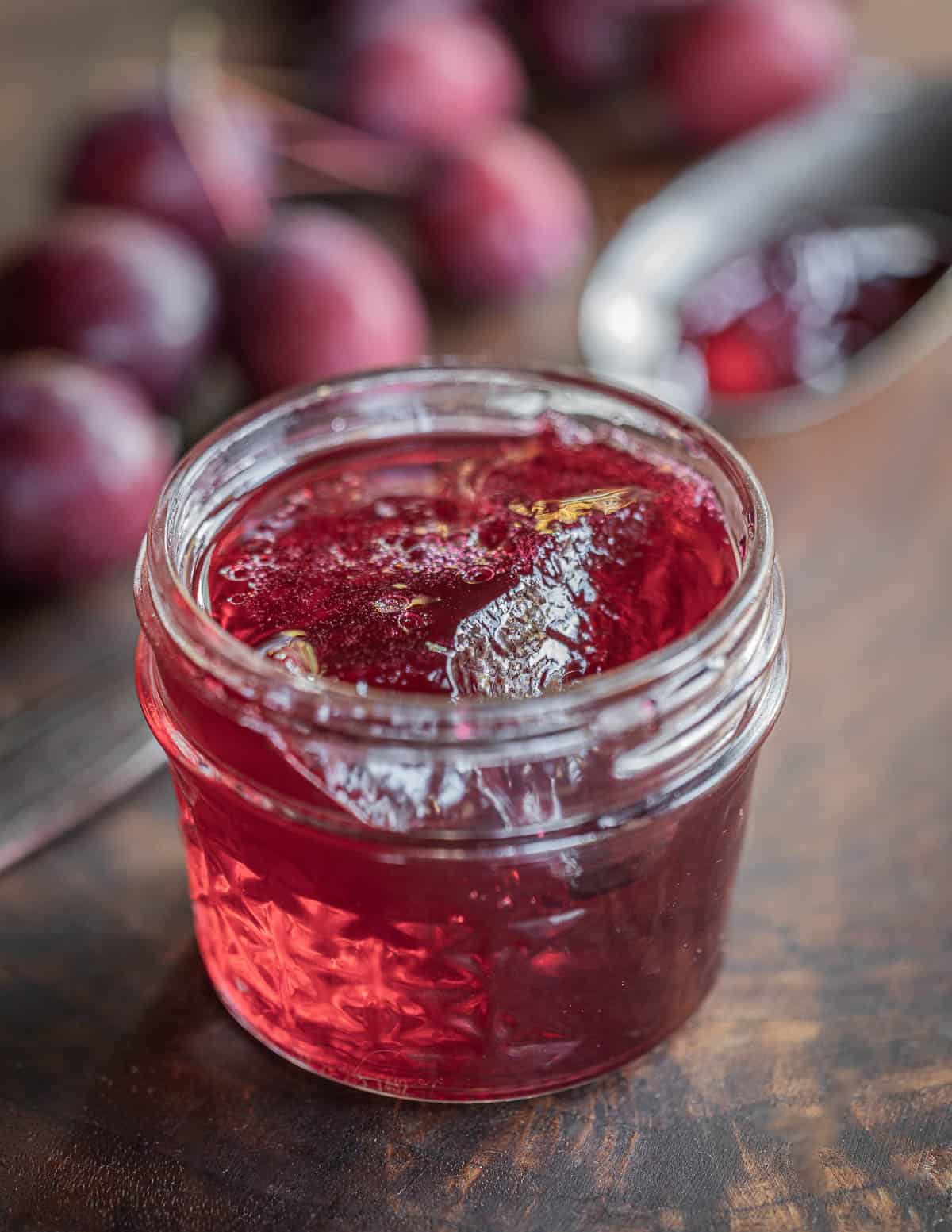
The Best Crab Apples for Jelly
Every red-skinned crab apple I've cooked has made a good jelly, but dolgo crab apples are by far the best I've cooked with. These heirloom crab apples are well-known for their strong, natural pectin. You won't find them in stores, but there's 3 you-pick orchards near me that sell them.
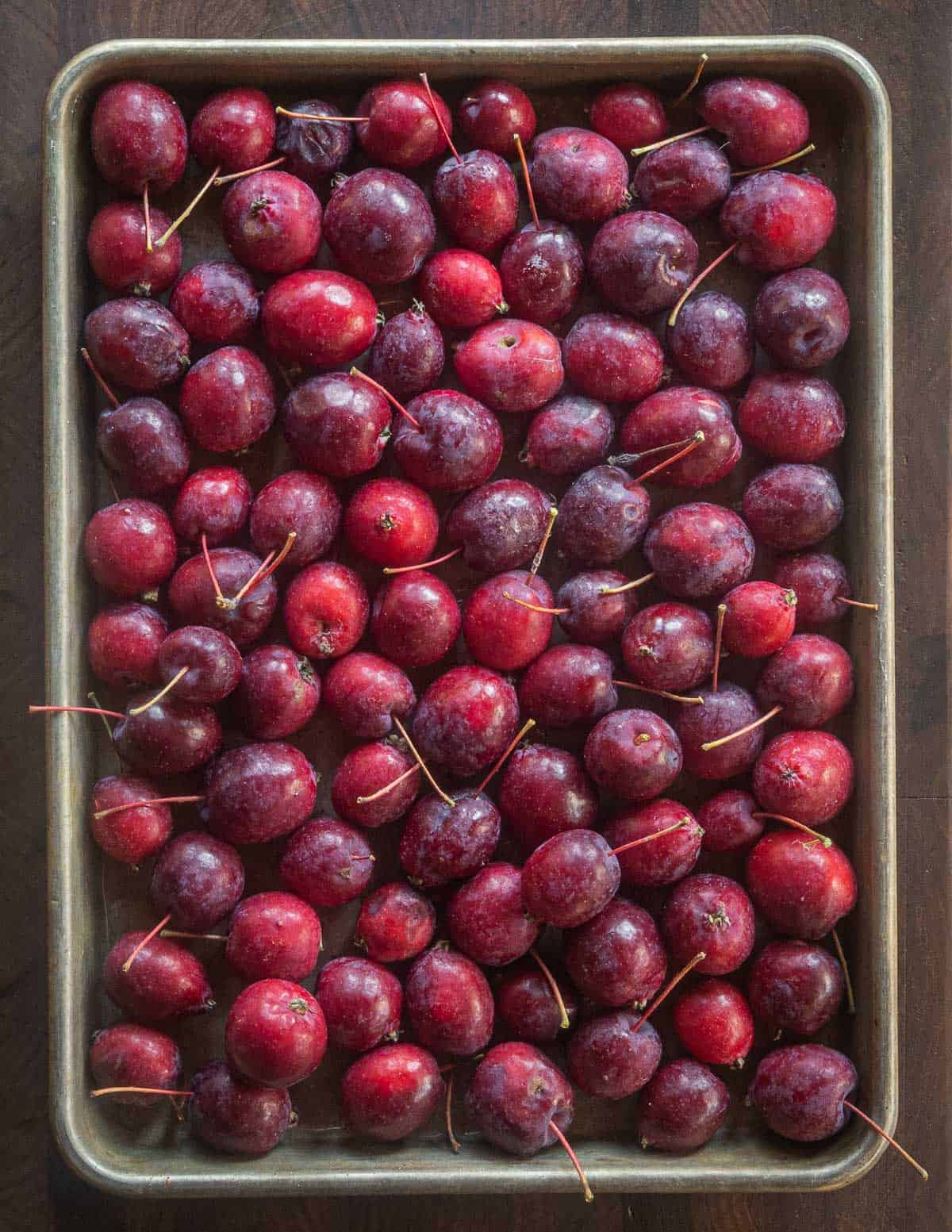
If you can't find dolgos, I recommend crab apples with red skin.
After dolgos, ornamental Chinese crab apples are my favorite, but they contain less water and I have to squeeze the bag to extract extra apple juice for jelly.
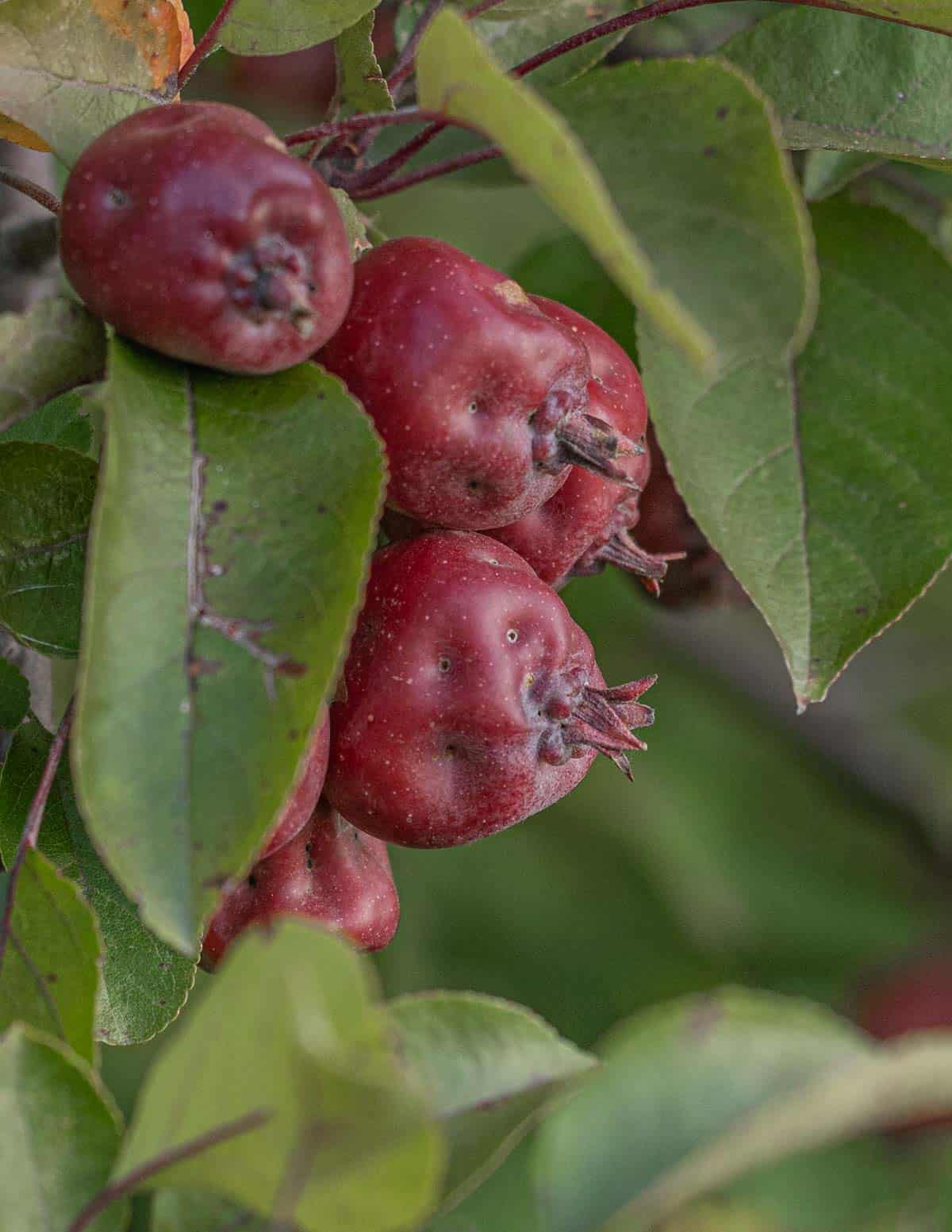
How to Make Crab Apple Jelly
First you make crab apple juice by cooking the apples. Wash the apples and combine them with water to cover, roughly 1 cup of water per pound of apples, and up to 1 ⅓ cup per pound.
The mixture is cooked until the apples soften, then you mash the apples and simmer for a few minutes more. The entire process takes about 15 minutes.
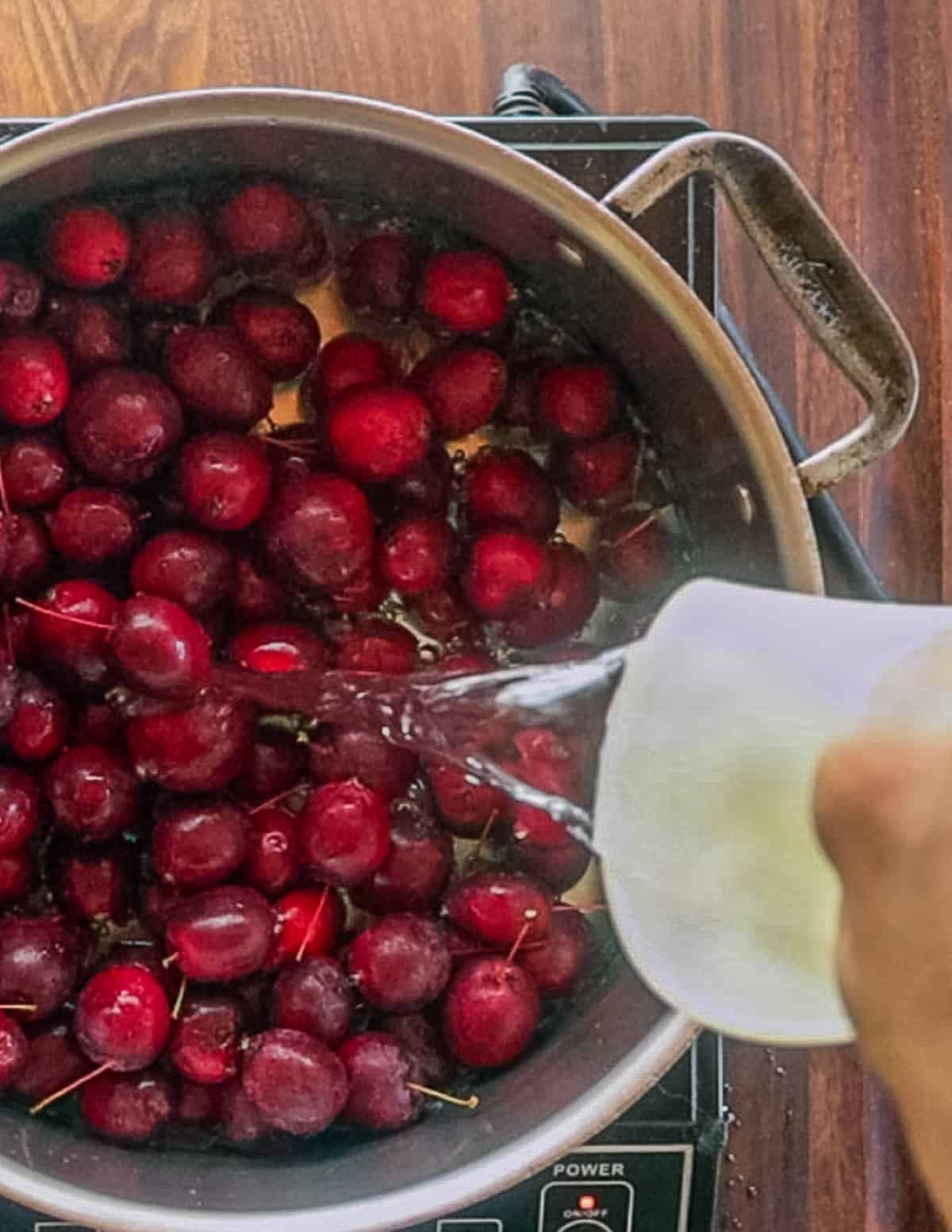
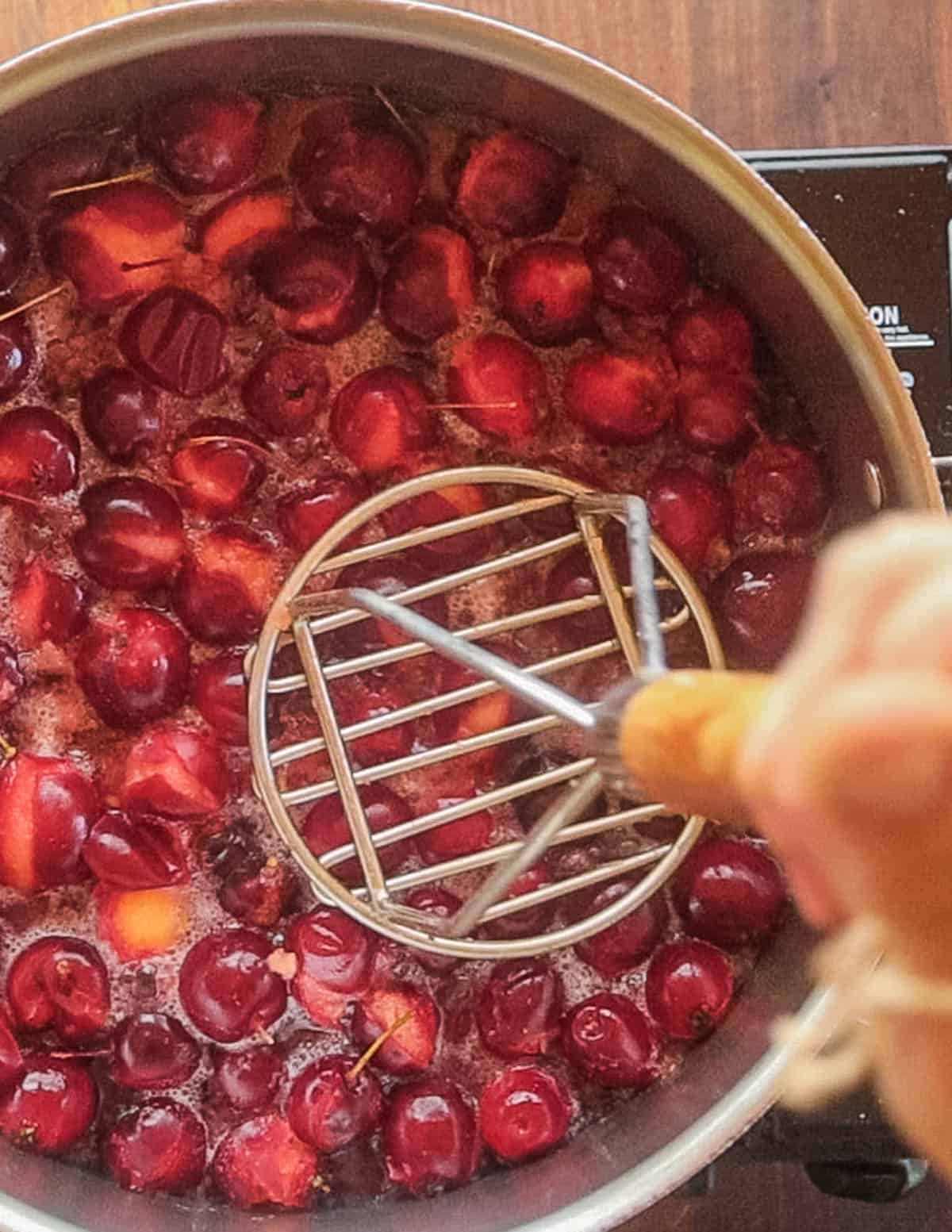
Next the mixture is poured into a strainer lined with wet cheesecloth or a jelly bag and allowed to drain. Most recipes will say not to squeeze the liquid from the bag as it will give you a cloudy jelly, but if your crab apples don't yield 3 cups of juice you'll want to squeeze the bag which can yield an extra 1.5-2 cups of juice from my experience. Apples can vary drastically in their water content so expect some variation if you don't use dolgos.
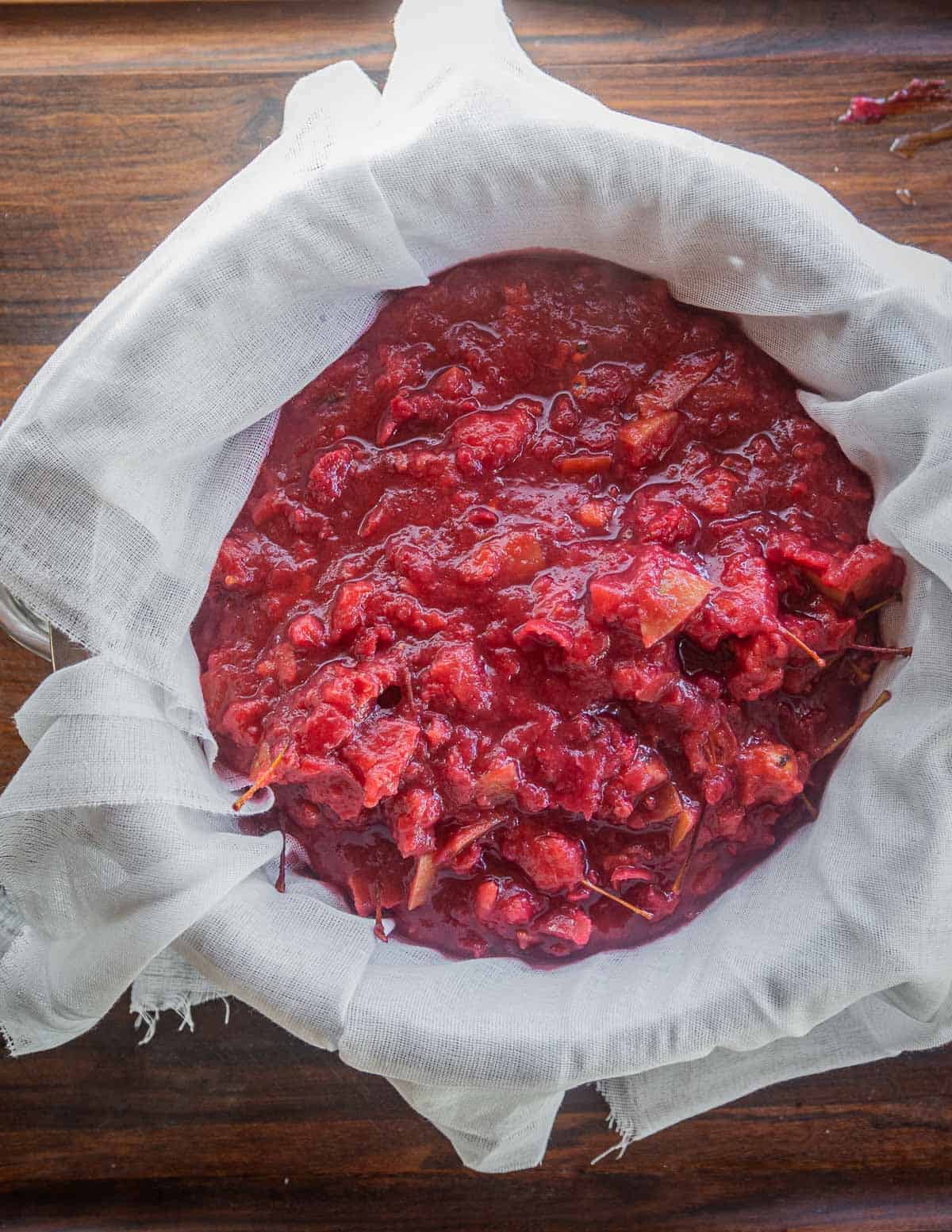
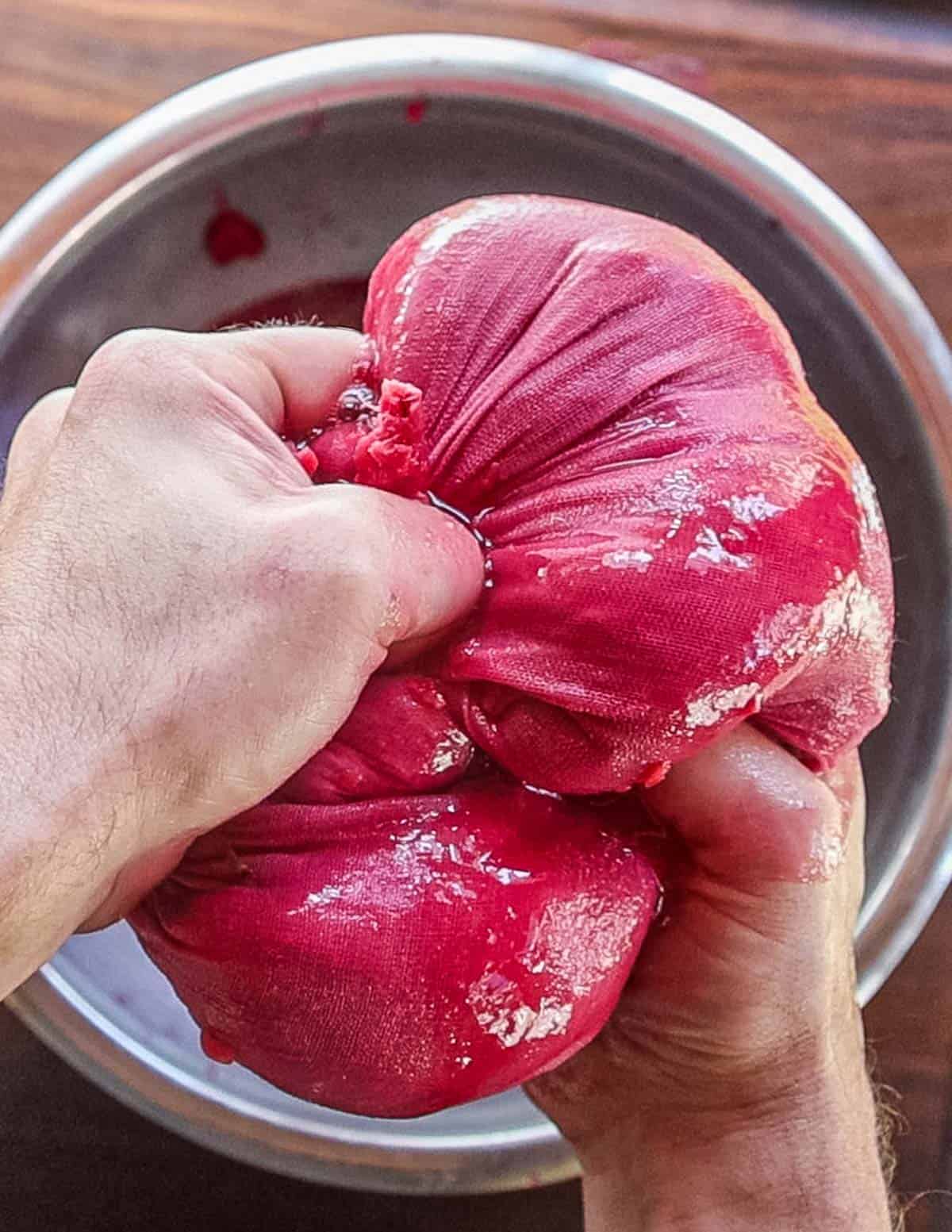
Once you've made the crab apple juice, you mix it with sugar. No pectin is needed. The juice is brought to a boil and cooked until it reaches 220 F.
While it cooks, I usually spoon drops of jelly onto a cold plate to test the set, but apple pectin is so easy to work with it's usually easier to just watch the candy thermometer.
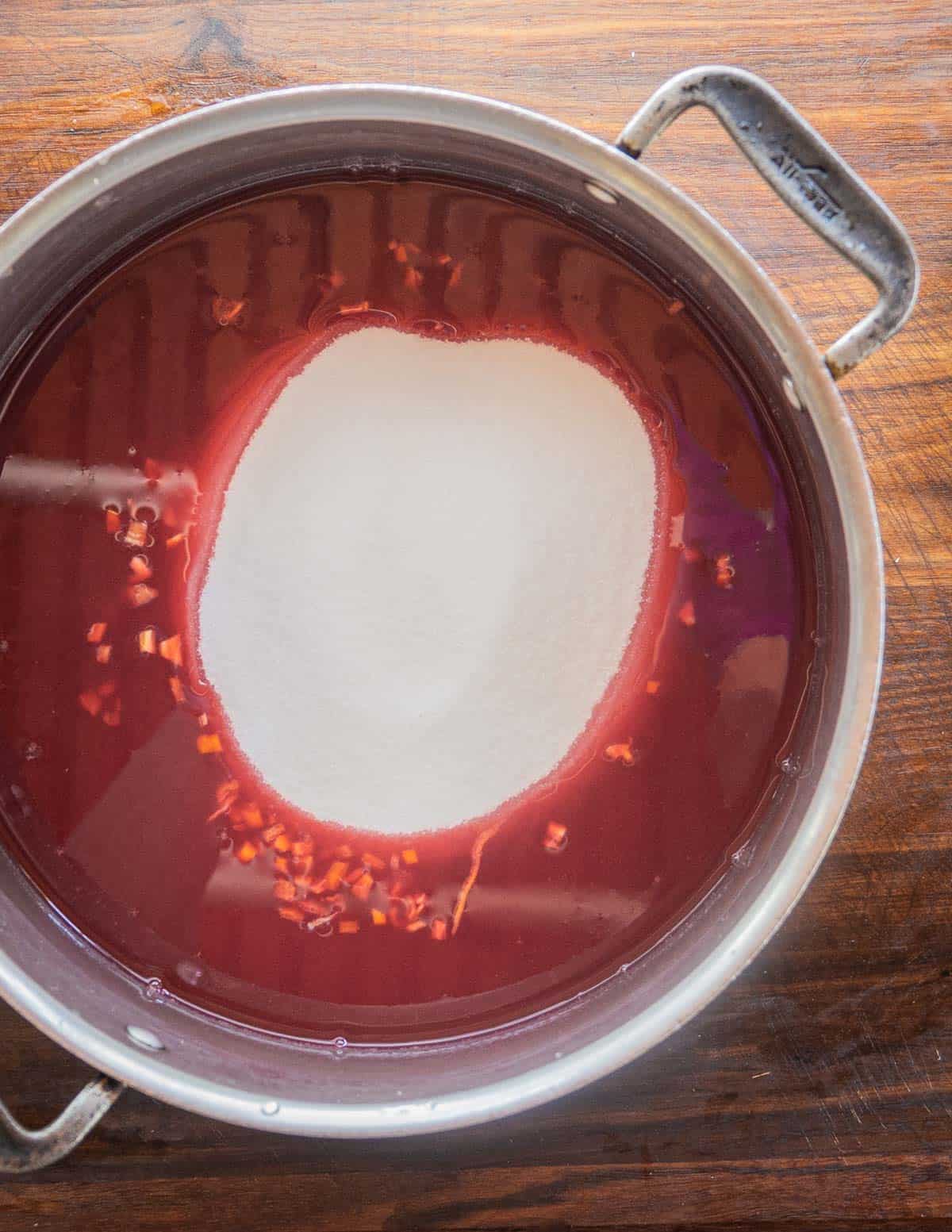
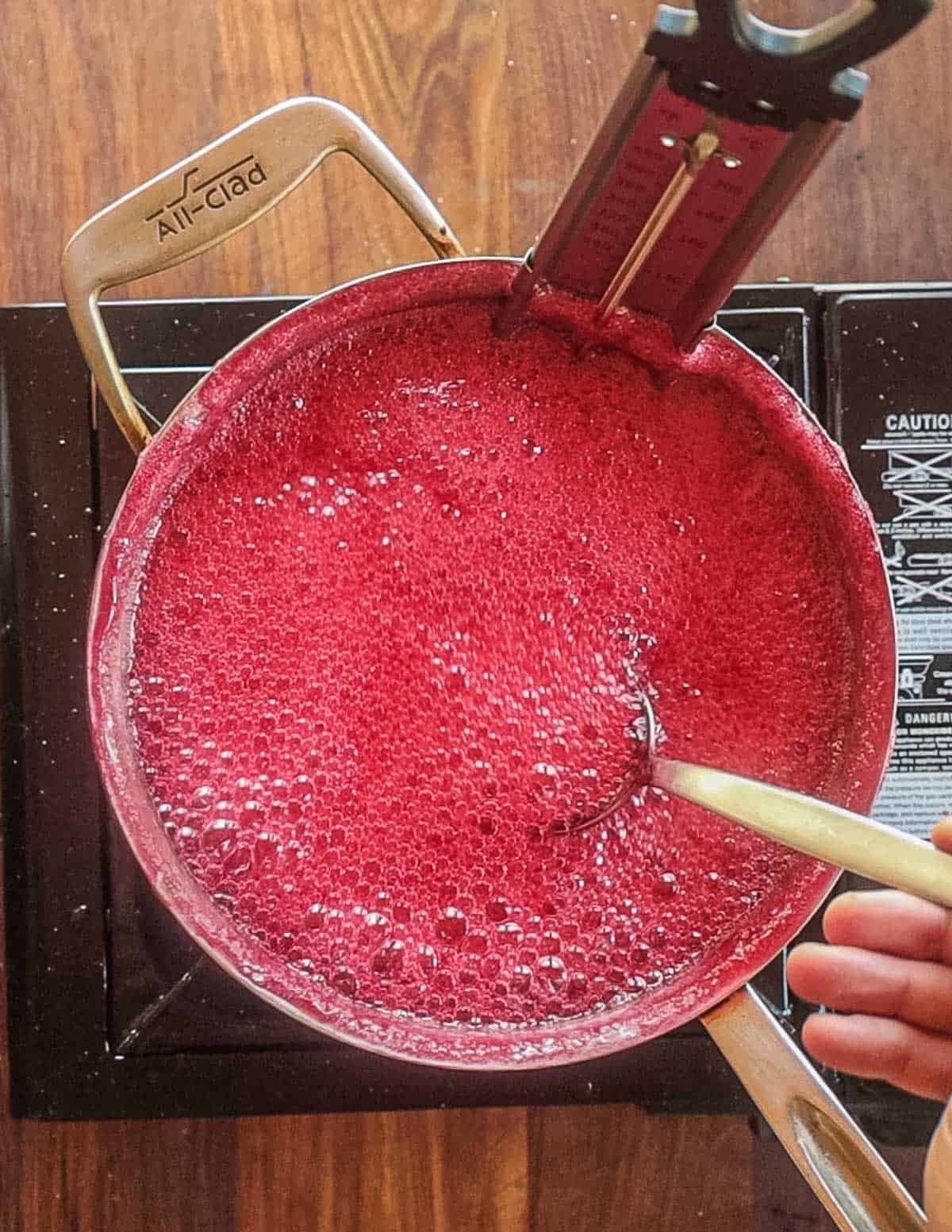
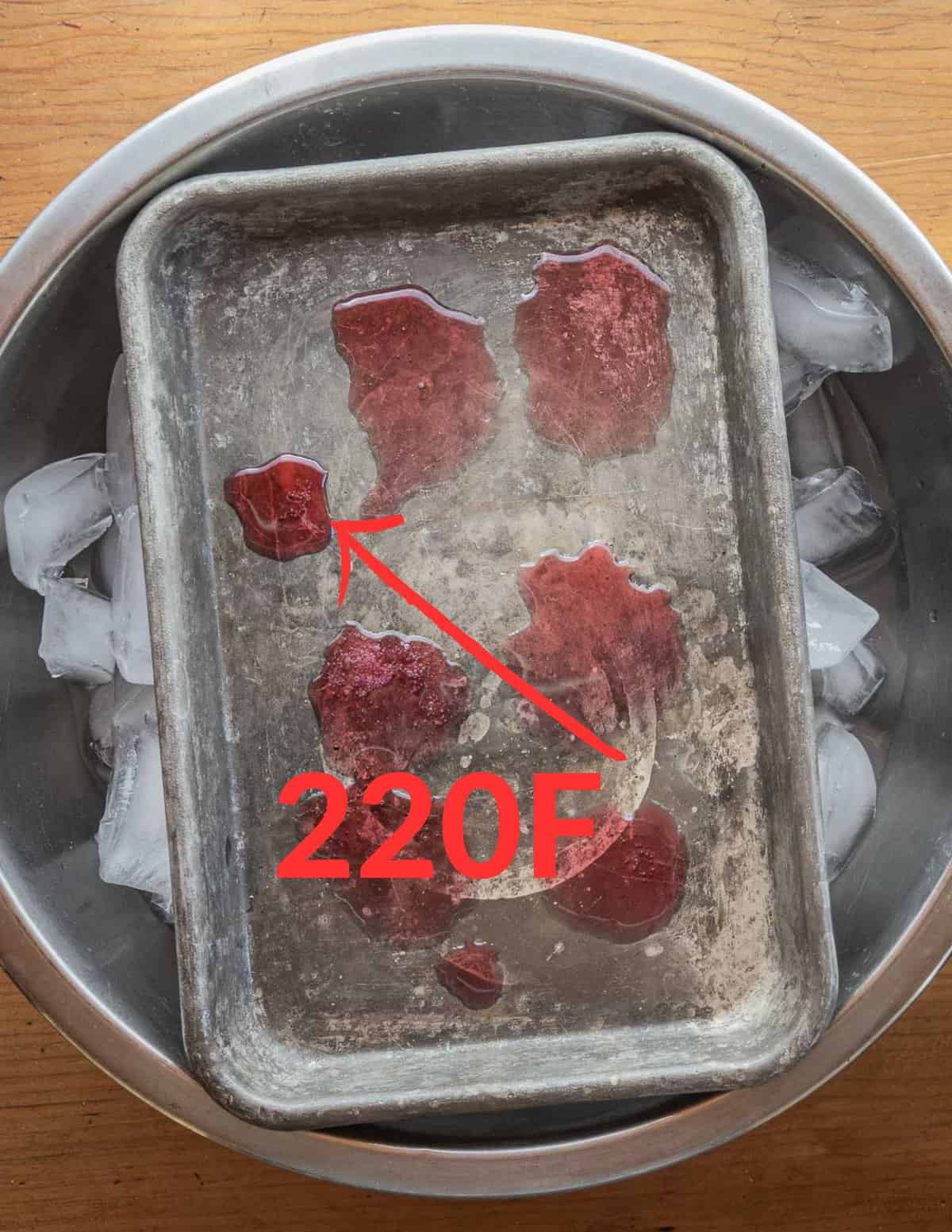
Once the jelly reaches 220 F and the edges of a drop on a cold plate hold their shape, lemon juice or citric acid is added and the hot jelly is poured into canning jars.
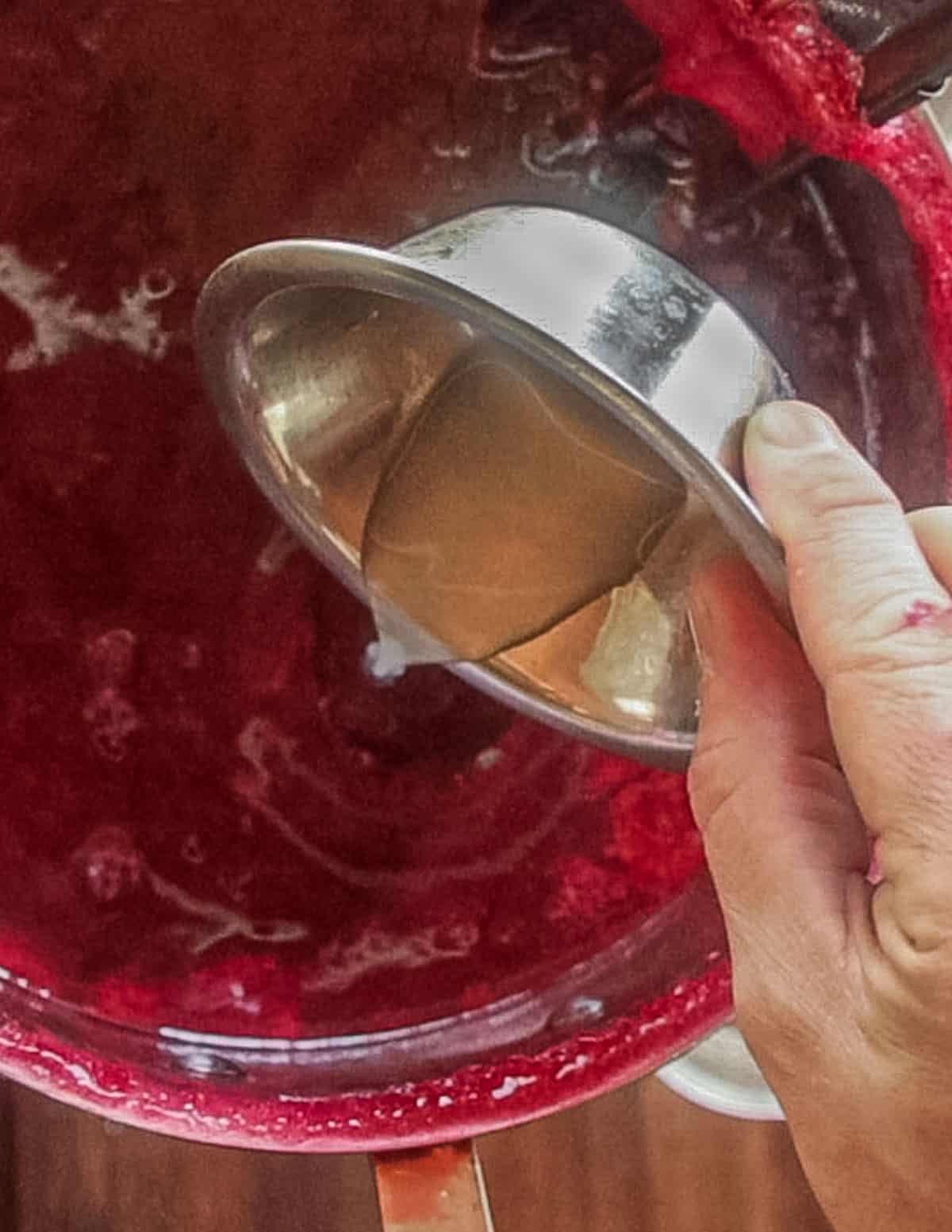
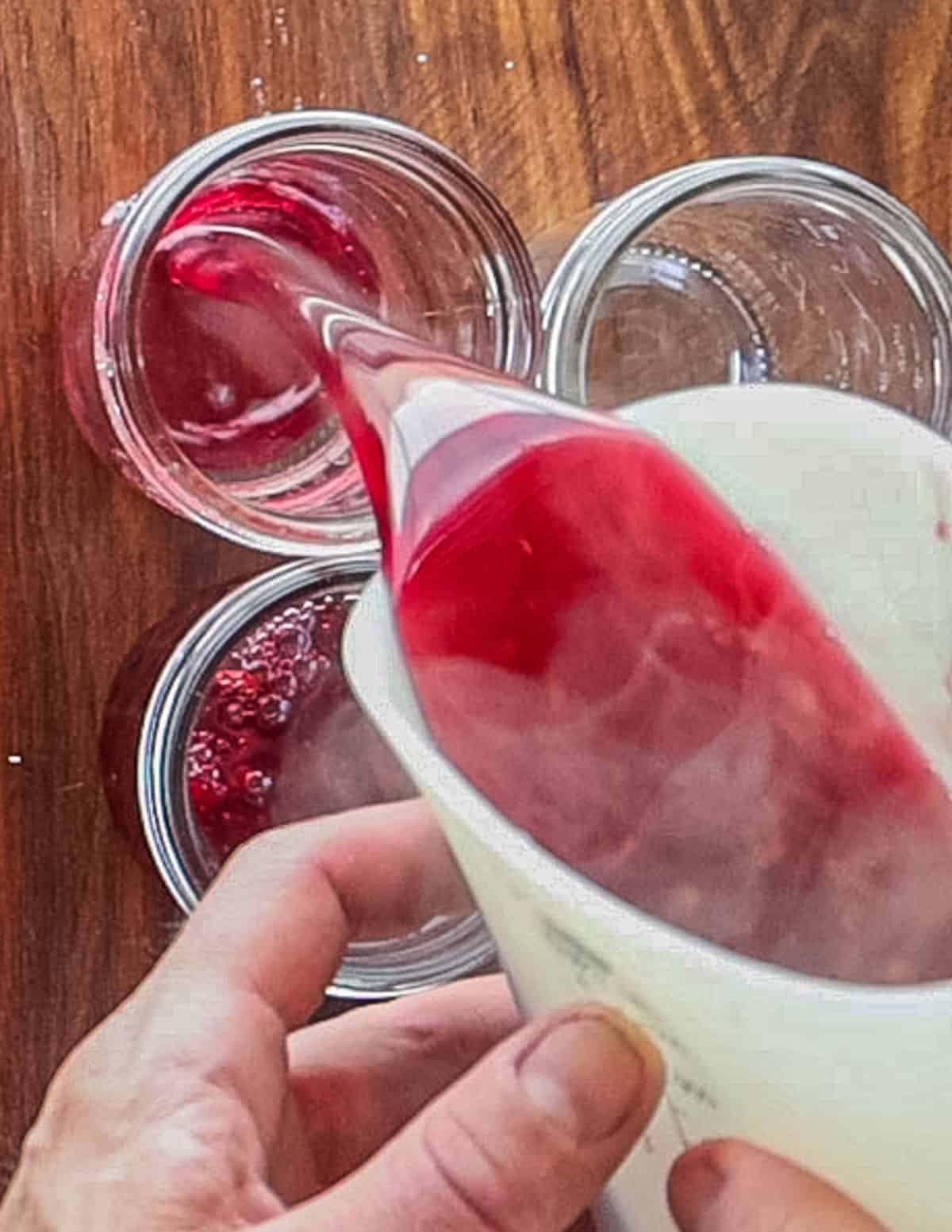
Canning Crab Apple Jelly
Canning the jelly is easy. After pouring the jelly into jars, The lids are screwed on tightly, then the jars are processed in a boiling water bath canner for 10 minutes. (Adjust the cooking time according to your altitude if you're above 1,000 feet) After processing, the jars are removed and allowed to cool, and stored in a pantry.
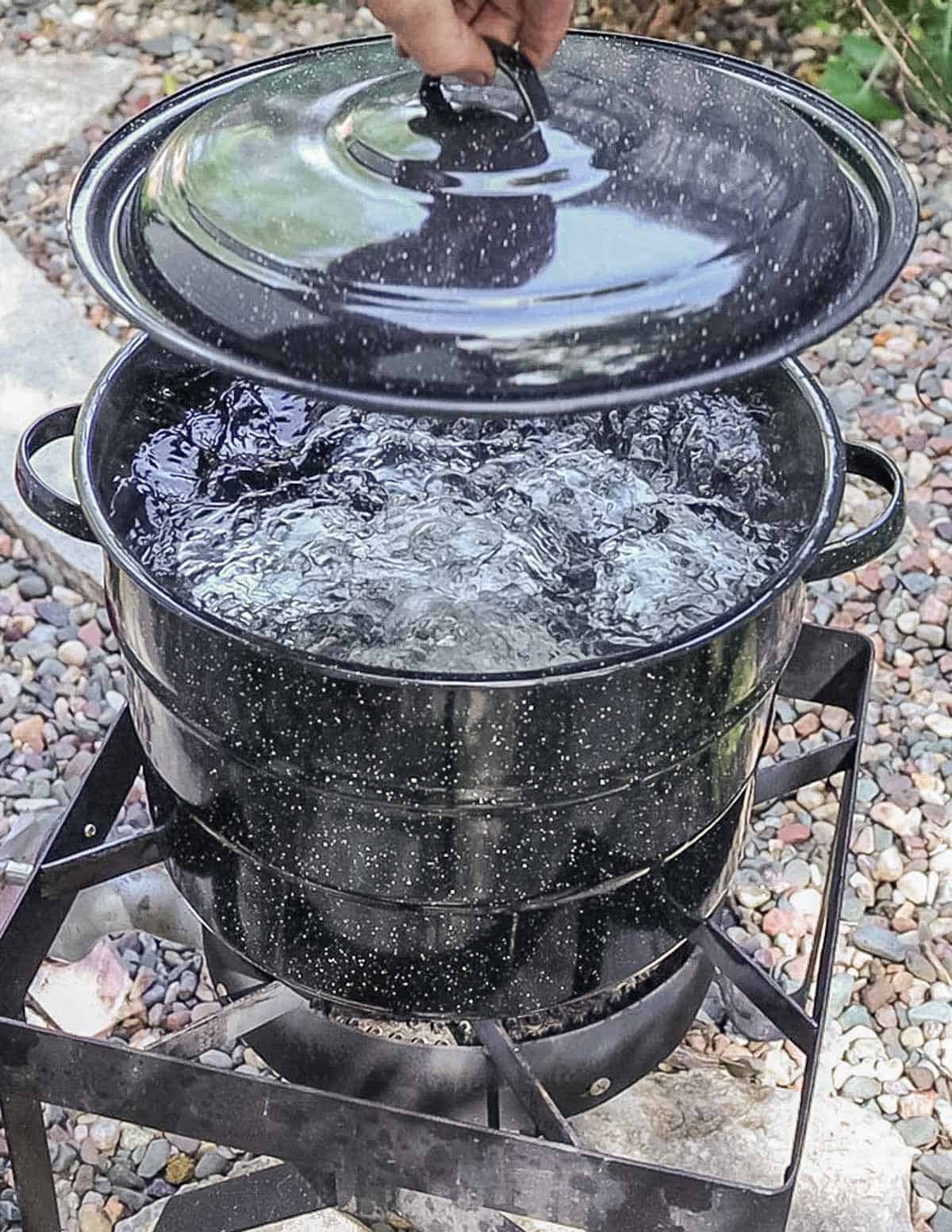

Crabanero (Crab Apple Hot Pepper Jelly)
Crab apple pepper jelly is my personal favorite version. It's sweet, tart, and spicy, and makes a great gift. It's easy to make, and delicious served on a cracker with goat cheese or cream cheese.
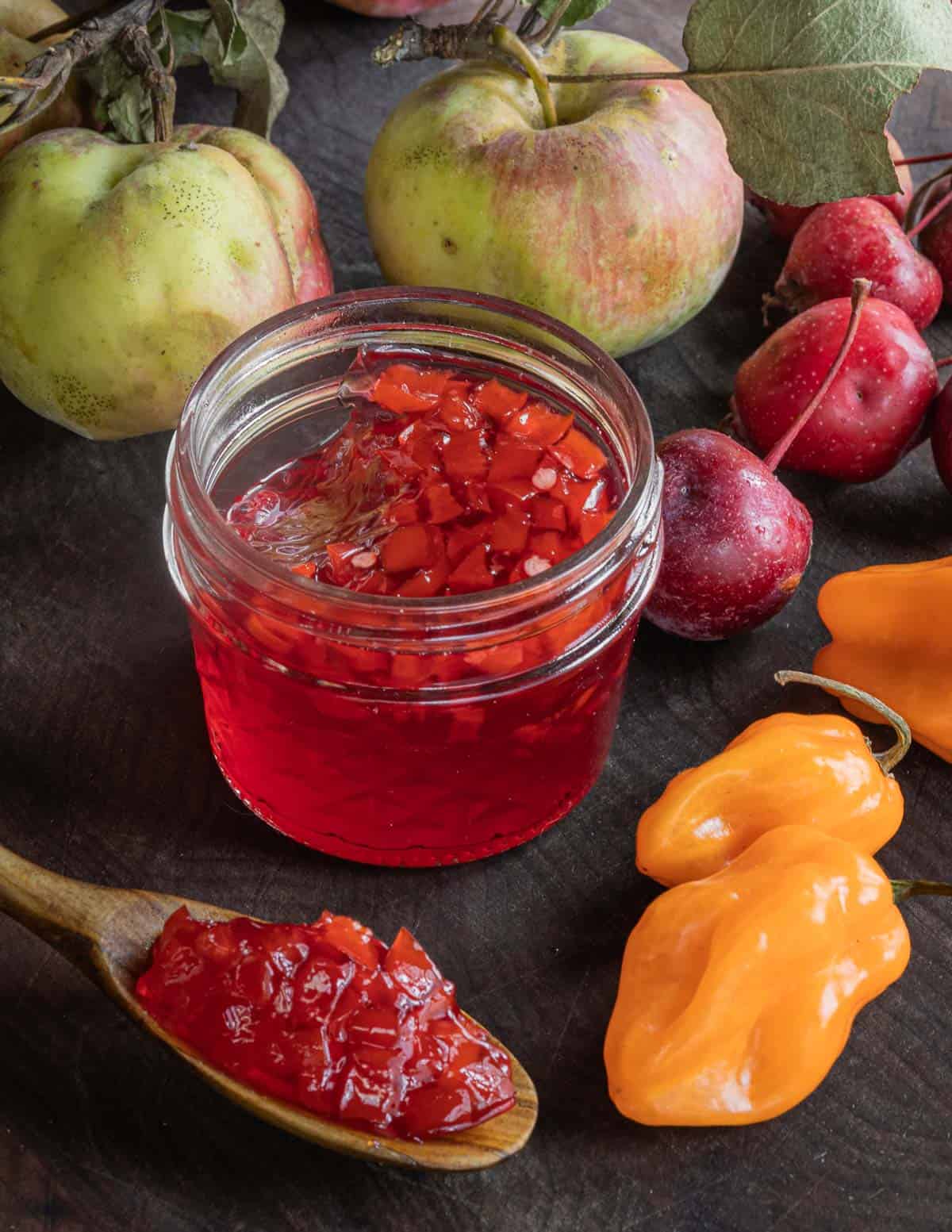
I call my apple jelly made with habaneros "crabanero jelly". To make it, you follow the recipe for basic crabapple jelly, adding two seeded, finely chopped habanero peppers when you add the sugar. Other than that, the process is exactly the same. The images below describe the process of cutting the habaneros.
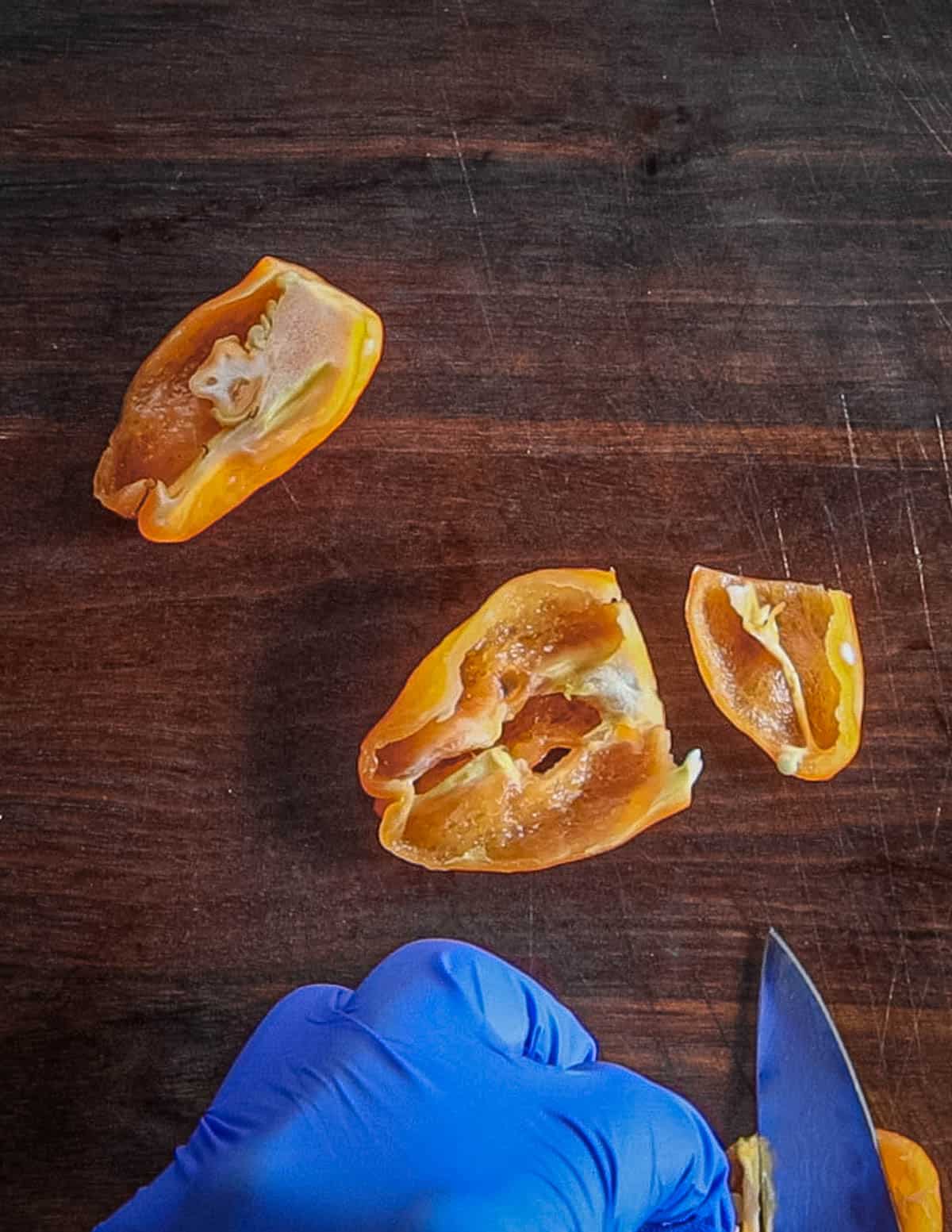
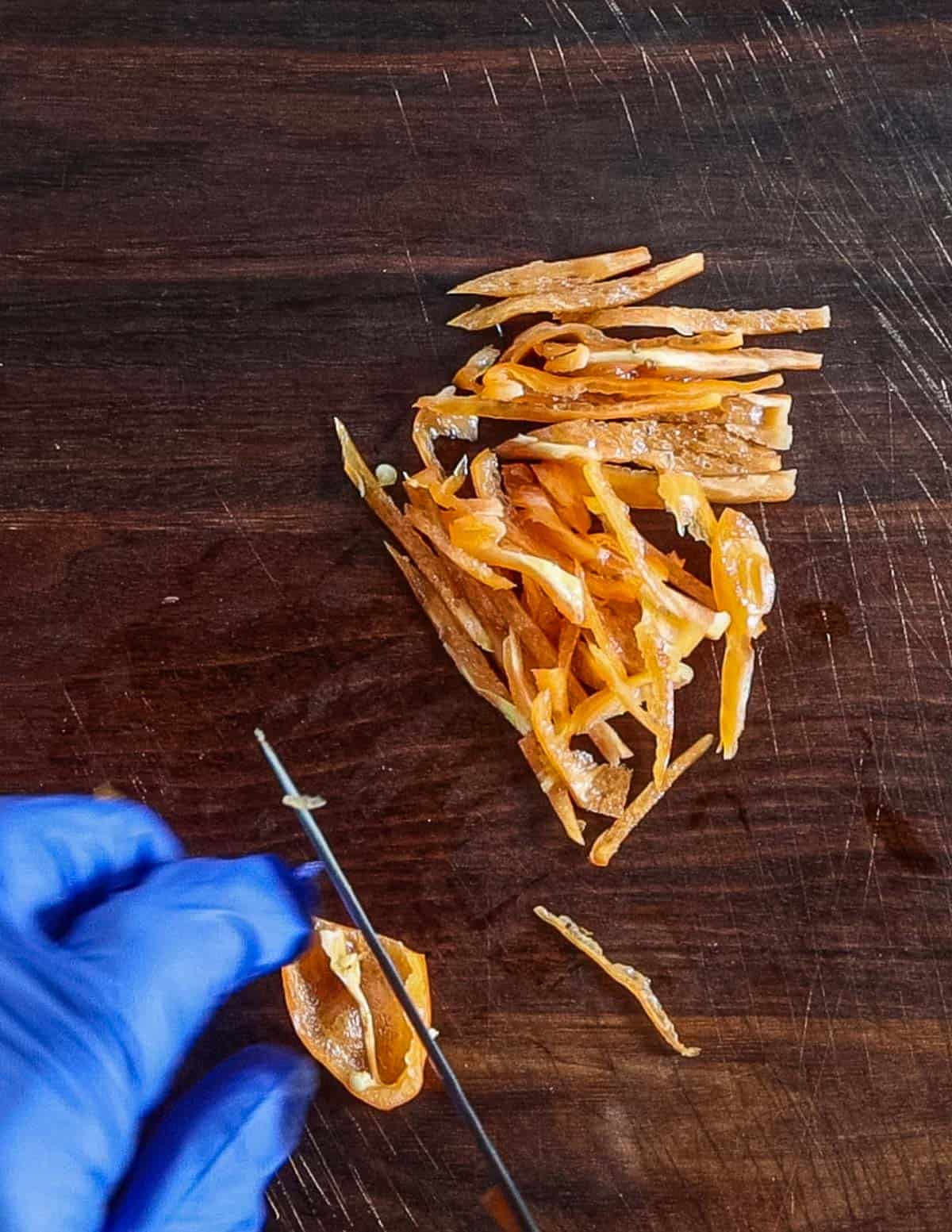
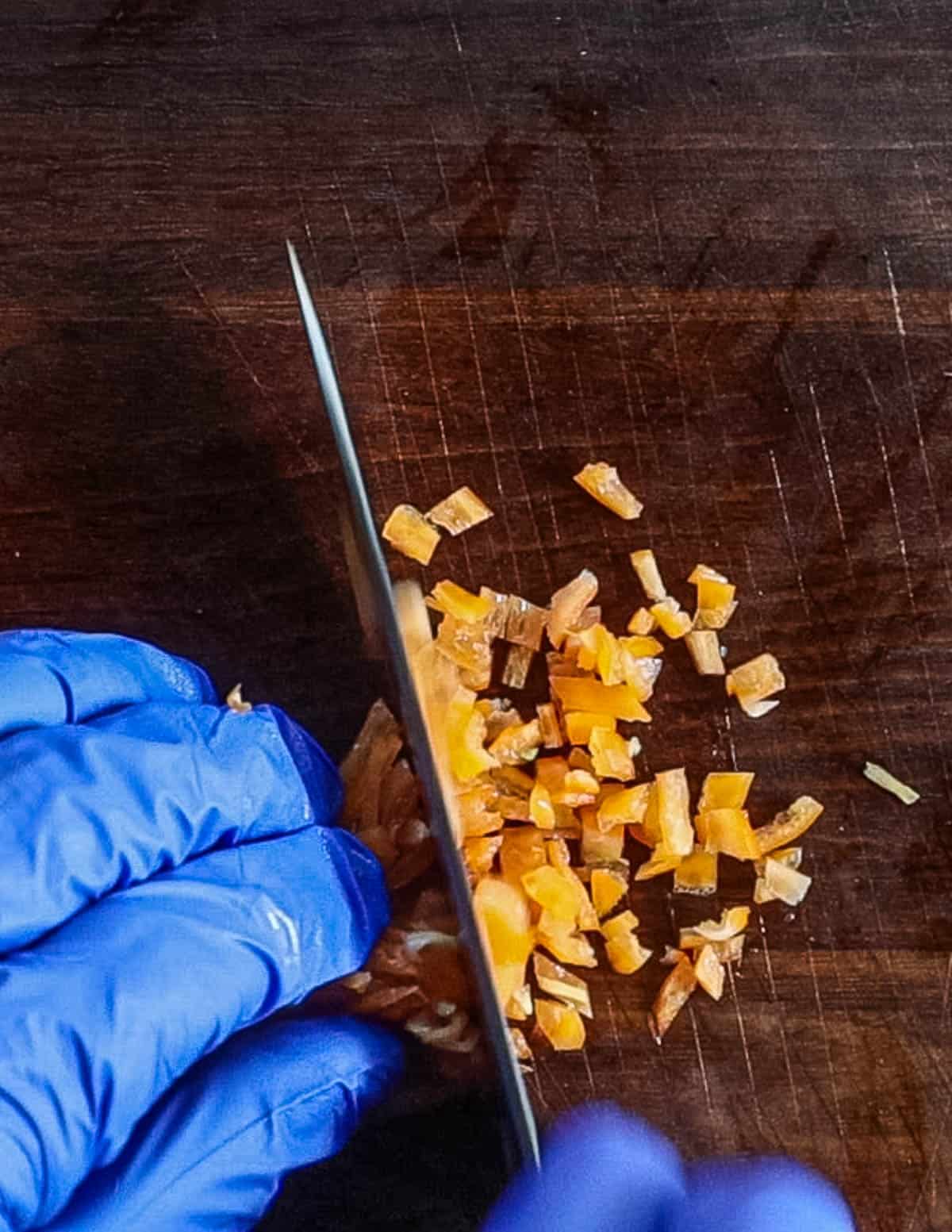
How to Use Crab Apple Jelly
The dolgo crab apple jelly is great on buttered toast, English muffins, bagels, and just about anywhere else you'd use jelly.
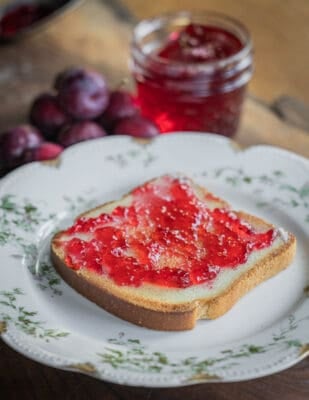
Hot pepper crab apple jelly is more versatile than the basic version. I love it as an appetizer with cream cheese and crackers, or it can be melted and used as a glaze for pork and chicken.
Related Posts on Wild Fruit
Crab Apple Jelly or Crabanero Jelly
Equipment
- Canning Jars
- water bath canner
- 1 gallon or larger pot for cooking the jelly
- Metal plate or baking tin for doing set tests
- Large bowl of ice (optional)
Ingredients
Basic Apple Jelly
- 3 lbs dolgo crabapples or another pectin-rich crabapple
- 3 cups water
- 3 cups sugar
Hot pepper Jelly
- 2 habanero peppers seeded and finely chopped (optional)
- 2 teaspoon lemon juice or ¼ teaspoon citric acid
Instructions
Make the crabapple juice
- Wash the crabapples and combine with the water in a wide pot, such as a pasta pot. Bring the mixture to a boil, then turn the heat down to low. Mash the apples, then cook for 10 minutes more on lowest possible heat.
- Pour the mixture into a colander lined with a two layers of cheesecloth and allow to drain and cool completely. Discard the skins and seeds or save to make homemade apple vinegar.
Cook the jelly
- Measure the crabapple liquid and mix with an equal amount of sugar by volume, which should be about 3 cups. If you have less than three cups, I recommend squeezing the bag to get extra juice. If making crab apple pepper jelly, add the chopped peppers now.
- Bring to a boil over high heat and cook until the temperature reaches 220F, doing set tests on a plate set over a bowl of ice. I like to use a metal pie pan as it transfers hot and cold almost immediately and will show you the results the fastest.
- When the edges of a drop of syrup threatens to hold its shape on the plate, (up to 225 F) it’s done, beat in the lemon juice and pour the mixture into clean jelly jars leaving ½ inch headspace.
Water Bath Canning the jelly
- Screw on the lids, transfer to a waterbath and process for 10 minutes, or as needed for your elevation and size of your jars. I like 4-8 oz jelly jars which make a great gift.
- Cool the jars, then store in a cool dark place, like a pantry.
Video
Notes
- To ensure a crystal clear jelly, don’t squeeze the cheesecloth. The seeds, skins and excess juice can be used to make fruit scrap vinegar, or put through a food mill to extract the sour-tasting pulp for cooking.
- For a fun variation, throw a small bundle of fresh mint into the apples halfway through cooking them with water.
- Use the pectin of the apples to help other low-pectin jellies set, like chokecherry jelly.

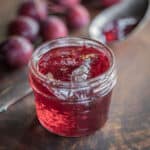
Erik
Those in the Deep South, for whom crab/apples are usually difficult to grow, may want to try this with mayhaws (Crataegus opaca, aestivalis, etc) instead.
GwenJ Jenkins
Delicious Chokecherry Jelly , was given 2 190ml jars this week . Where can I purchase more
Elena
Hi, I'm making this now for the first time. Have you ever baked the apples as you do with the wild plums? I don't have cheesecloth so I pushed the pulp through a fine mesh strainer. Also, is the lemon juice for both recipes or just the one with the peppers?
Thanks!
Alan Bergo
Hi Elena. You have to have the juice to make jelly, you can still use the pulp but it will be jam instead. Lemon juice is for all jellies to help the pectin set.
Elena
Thanks for the FAST reply. I feel a little embarrassed, I watched your video after I sent the message and realized that the lemon juice was for both, and that I'm probably making jam and not jelly. Still delicious! I have 5 more pounds so I'll try again with the jelly recipe. Thanks very much!
Alan Bergo
You bet.
Bryan
Have not made it yet, but have you tried putting the habaneros into the biol and mash or would they make it too hot? Thanks
Alan Bergo
You can mash them, or you could puree them with the juice before cooking. I just did a batch where I puree them and it worked really well.
Elizabeth Ward
All crab apples seeds covert to cyanide when eaten. Some woman in Calgary l, Alberta in Canada had crab apple cider and died a horrible death from juicing crab apples because of the seeds. You are supposed core and seed them. The seeds turn into cyanide.
Alan Bergo
No, you need to do some research here, I’ll explain.
You’re ignoring a few key points about the toxicology of Prunus species plants (stone fruits).
Juicing the seeds of any Prunus species and consuming raw is not recommended. This is because the juice needs to be cooked, as in my recipe. Cooking destroys the cyanide and makes it safe. This can be done with a steam juicer or by cooking and mashing the fruit as I demonstrate in the recipe and video.
Do you honestly think someone who made jelly 200 years ago would deseed every single crab apple? If that was the case no one would make jelly.
For more information I’ve written on Prunus toxicology, with a number of examples on how cherry pits are used in traditional foods you can read my article here.
Kim
When do we usually harvest the crab apples?
Alan Bergo
Hi Kim, crab apples can vary alot from tree to tree. I've been picking them now (late august) and into September. I'm in MN though so depending on where you are it can be a little different. When you see a couple on the ground you'll know they're good and ripe.
A. H.
For all you mashers and jelly bag people. I faithfully did that for years and it’s a lot of work. Buy a steam juicer so much easier and I get a lot more out of the apples.
Alan Bergo
It’s also another equipment for people to buy and store that only gets used for part of the year. I do really like them though.
Henry Gilman
I put lemon juice in but it doesnt say how much. Thanks
Alan Bergo
The recipe calls for 2 teaspoons 😉
Kim
Hi, thank you for this recipe it sounds delicious. I can't wait to try it. I have my own ready supply of Red crab apples at my mother's home in the country. This year the tree is full to overthrowing.
My question is: How to use crab apple pectin in other jelly recipes? Is it fruit specific? Does it only work with jelly?
Thanks
Alan Bergo
I think you're talking about making homemade pectin here, which I haven't done. You can combine crabapples with other fruit to make no-pectin added jelly though. My rowanberry jelly is made like that.